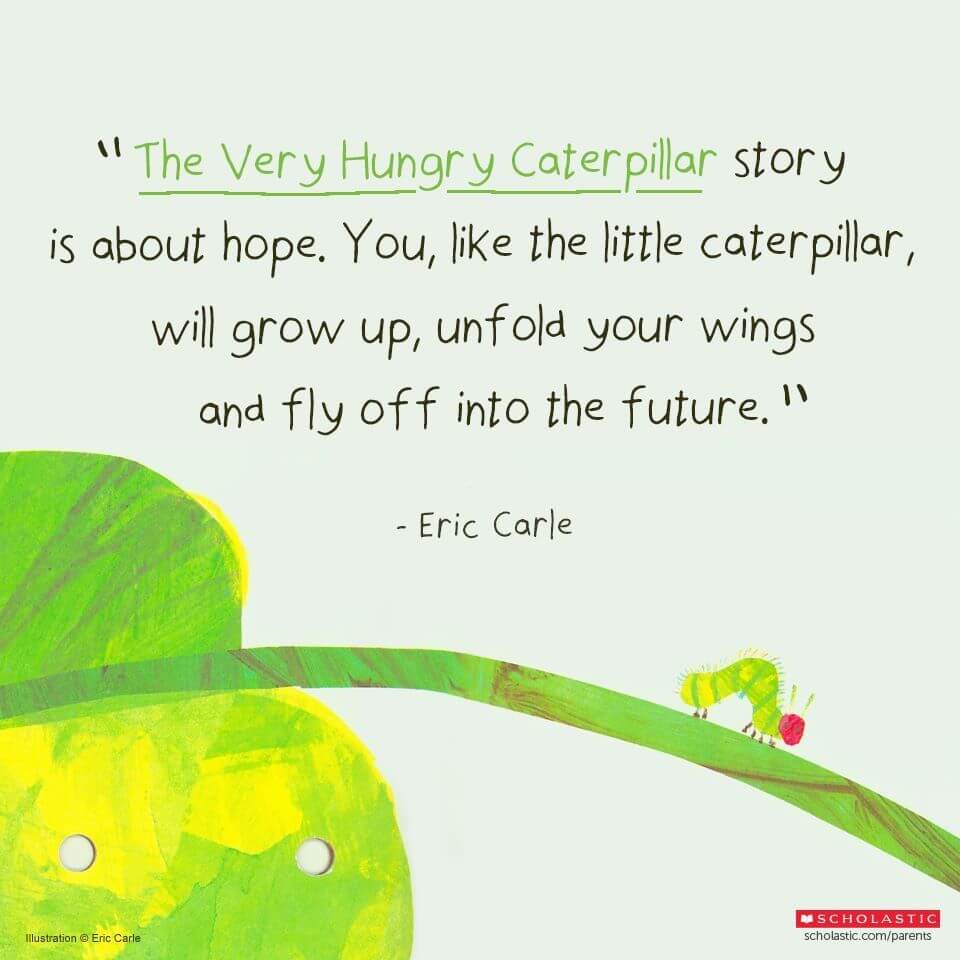Words Of Wisdom – Eric Carle
Eric Carle is beloved as the creator of brilliantly illustrated picture books for very young children.
His best-known work, “The Very Hungry Caterpillar” has eaten its way into the hearts of literally millions of children all over the world and has been translated into 64 languages and sold over 46 million copies.
Since it’s publishing in 1969, Eric Carle has illustrated more than seventy books, many best sellers, most of which he also wrote, and more than 145 million copies of his books have sold around the world.
Carle was born in Syracuse, New York, Carle moved to his father’s native Stuttgart when he was 6 years old, and spent his formative years in Nazi Germany. “Hitler dictated not only politics,” Carle tells Weekend Edition Saturday host Scott Simon, “he also dictated art.”Under the Third Reich, the only acceptable art was realistic and didactic, removed from the so-called “degenerate” trends of abstraction and Modernism.
But, in an act of resistance, Carle’s high school art teacher invited the young creative to his home to show him illegal reproductions of Cubist, Surrealist, and Impressionist art. Carle can’t recall exactly what he saw, but he thinks that’s where he saw expressionist Franz Marc’s Blue Horse. That visit and those reproductions made a deep impression on me,” he says. Marc’s Blue Horse even makes an appearance in the back of Carle’s new book.
It’s an iconic image, he says, regularly shown as a symbol of expressionism. Carle hopes blue horses show his young readers that in art, there is no wrong color.
“One must not stay within the lines,” he says. The point is to just enjoy color — but also to be surprised. Seeing a green lion or a polka-dotted donkey is still a bit of a shock, he says. “So in a small way, I repeat the shock I went through, I think. Of course, I’m not too sure it will work that way.”
Eager to return to the United States, Carle began working as a graphic designer for the New York Times in 1952, before being drafted into the army during the Korean War.
About a decade later, Carle’s career took a turn. He designed a poster of a red lobster, an advertisement for a pharmaceutical company, which caught the attention of children’s author Bill Martin Jr. The writer commissioned him to illustrate “Brown Bear, Brown Bear, What Do You See? “ (1967), and the rest is history.
From then on, Carle wrote and illustrated his own bedtime tales, including “1, 2, 3 to the Zoo” (1968) and the fan favorite, “The Very Hungry Caterpillar” (1969).
Carle has maintained an instantly recognizable style of college. He begins by painting white tissue paper with acrylic paint, and stores these swatches in color-coded drawers in his studio. He then cuts them to shape and layers the pieces to create grouchy ladybugs, purple cats, and beautiful butterflies. Carle loves that his signature technique is accessible. “In fact, some children have said to me, ‘Oh, I can do that,’” Carle said. “I consider that the highest compliment.”
In 2002, Carle and his wife opened the Eric Carle Museum of Picture Book Art in Amherst, Massachusetts, which presents exhibitions on Beatrix Potter, E. H. Shepard, Ludwig Bemelmans, and Quentin Blake, among others. The world lost a very talented & inspiring human when he passed in 2021.
“We have eyes, and we’re looking at stuff all the time, all day long. And I just think that whatever our eyes touch should be beautiful, tasteful, appealing, and important.”
His legacy will live on in his wonderful books. Watch a neat look at the amazing Eric Carle in the video below!
If you enjoyed this Words Of Wisdom on Eric Carle, consider checking out our one Charlez Schulz who brought us the ever-loveable Charlie Brown.
Or learn about the wonderful woman who brought us Peter Rabbie with our Words Of Wisdom On Beatrice Potter.
Enchanted Little World is a daily blog highlighting good news, funny videos, happy people and inspiring stories from around the world. Give each day a “high-five of happiness” with Enchanted Little World.



